


La idea de hacer comida sin gluten vino a raíz de las enfermedades que tuvo mi esposo hace ya un año, todo empezó por estas fechas y entre tantas cosas empezó a desarrollar una especie de alergia y sensación de inflamación hacia el gluten y los lácteos, por ende yo allí empecé a idearme comidas que fuesen sabrosas, pero también libre de todo eso para que él (que andaba sin apetito) le provocara comer.
Les diré que probé un montón de recetas y saque las que más me gustaron y a él también, en cuanto a sabor, facilidad de preparación y textura. Así que sin más preámbulo nos vamos a la receta.
The idea of making gluten-free food came as a result of the illnesses that my husband had a year ago, it all started around this time and among so many things he began to develop a kind of allergy and feeling of inflammation towards gluten and dairy, so I started to come up with meals that were tasty, but also free of all that for him (who was without appetite) to provoke him to eat.
I will tell you that I tried a lot of recipes and I took the ones that I liked the most and he liked the most, in terms of taste, ease of preparation and texture. So without further ado, let's get to the recipe.

400 g de lentejas amarillas
1 cda de levadura seca
120 ml de agua
60 ml de aceite
1 cdita de sal
1/2 cda de ajo en polvo u orégano.
400 g yellow lentils
1 tablespoon of dry yeast
120 ml water
60 ml oil
1 teaspoon salt
1/2 tbsp garlic powder or oregano.
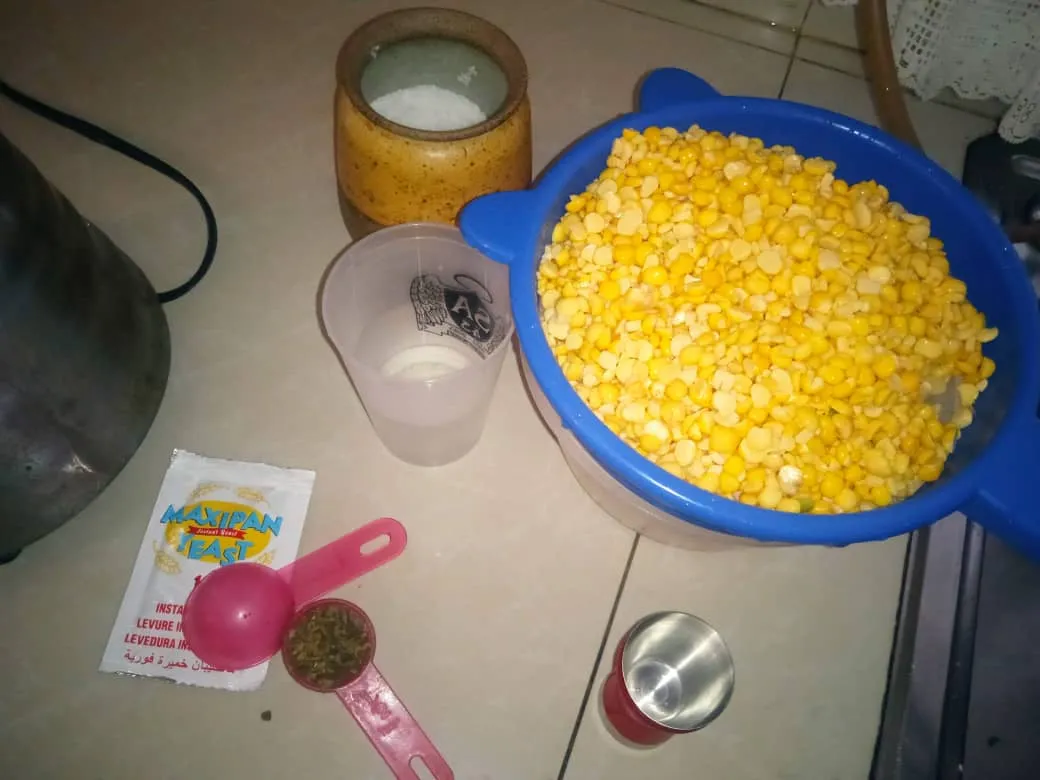

Remojar las lentejas amarillas toda la noche hasta que estas hidraten y se hinchen. Al siguiente día escurrir bien, llevar a una licuadora.
Una vez en la licuadora agregar el agua, el aceite, la sal y el orégano y empezar a procesar muy bien de a poco y si pueden ayudarse con una paleta de madera para ir moviendo y que se procese bien hasta que todo esté bien sin grumos.
Soak the yellow lentils overnight until they hydrate and swell. The next day drain well, transfer to a blender.
Once in the blender add the water, oil, salt and oregano and begin to process very well little by little and if you can help with a wooden paddle to move and process well until everything is well without lumps.
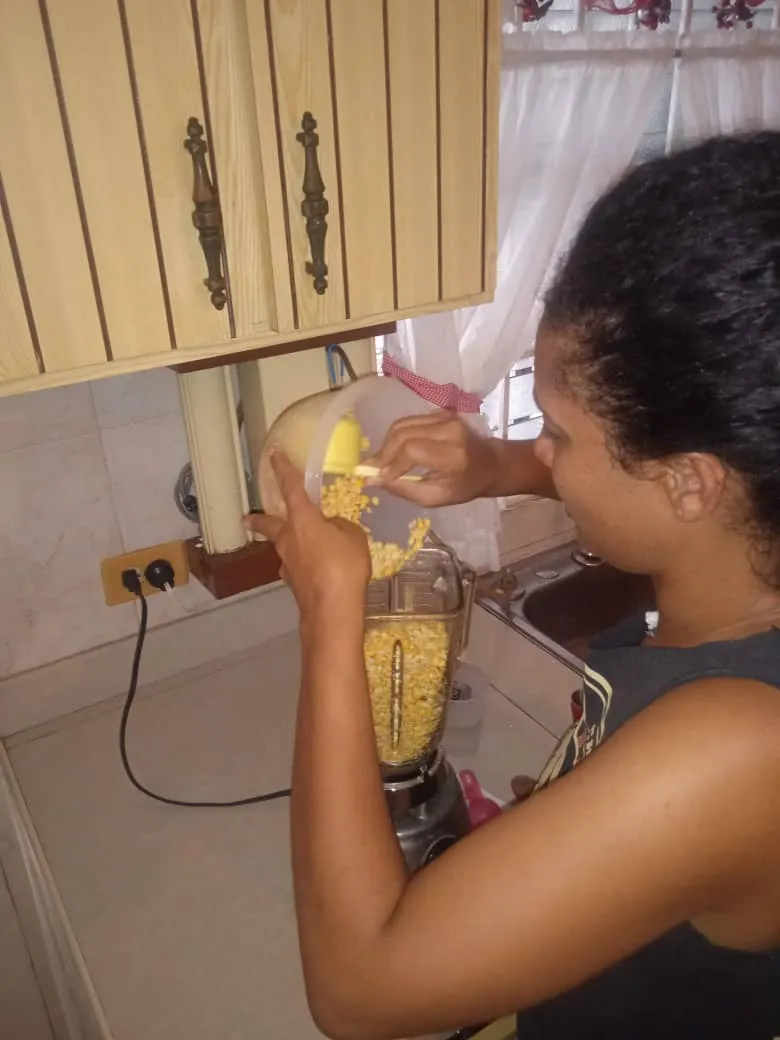 |  | 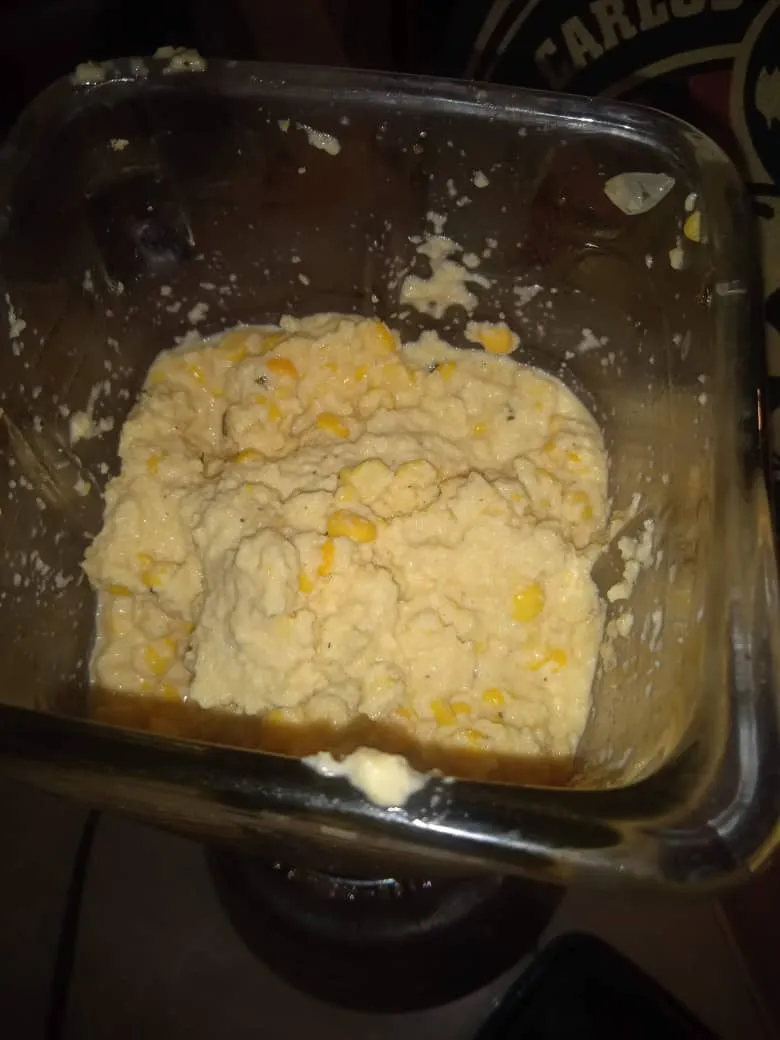 |
|---|
La masa mezcla tiene que quedar como si fuera mezcla de cachapa o una crema. Allí es cuando yo aprovecho de echar la levadura y mezclar un poco más. La levadura se puede echar con le agua al inicio, solo que yo la agrego así por cuestiones de gustos, nada más.
La mezcla pasarla a un molde engrasado previamente y dejar reposar en un lugar cálido hasta que duplique su tamaño. Esto tarda alrededor de 20 min a 30 min.
The mixed dough has to be like a cachapa mix or a cream. That is when I take the opportunity to add the yeast and mix a little more. The yeast can be added with the water at the beginning, I just add it this way for taste reasons, nothing else.
Transfer the mixture to a previously greased mold and let it rest in a warm place until it doubles in size. This takes about 20 to 30 minutes.
 | 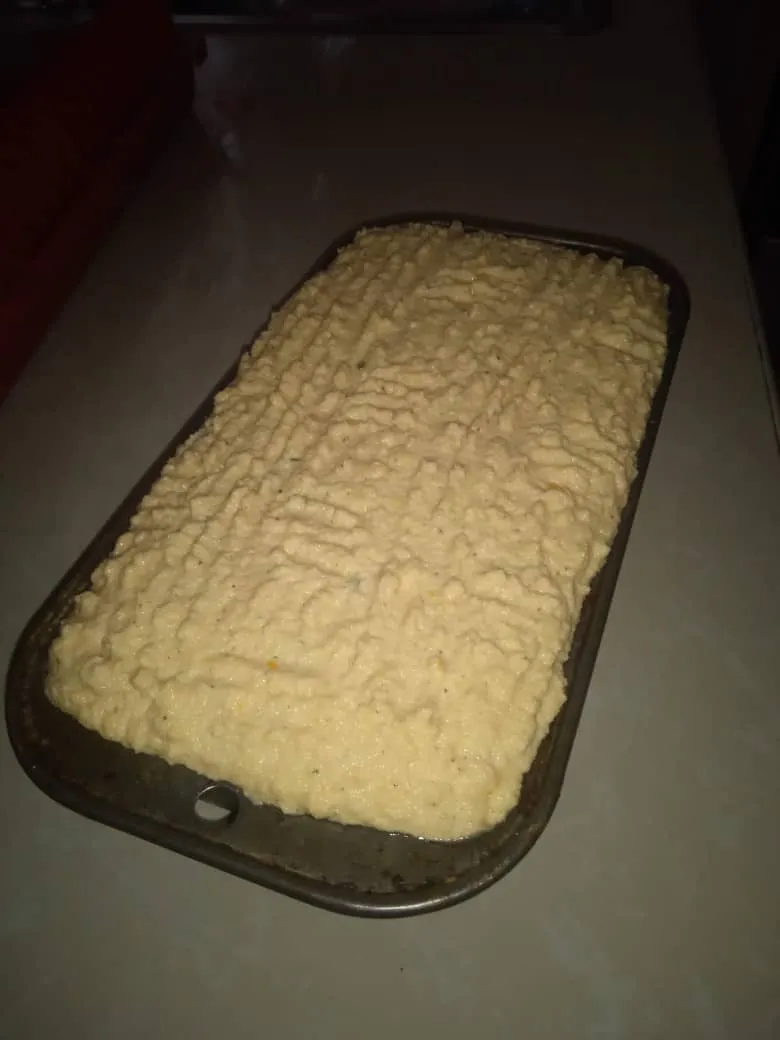 |
|---|
Al verificar que ya haya elevado su tamaño, llevar al horno ya precalentado entre 160 °C - 180 °C por 35 min. Ingresar un chiquillo como hacemos con los pasteles y este debe salir seco.
Dejar enfriar totalmente antes de desmoldar y poder picar. Yo cuando lo pique aún estaba un poco tibio, pero lo quería así porque iba a cenar.
Este pan me gusta, queda con una textura suelta y su sabor es delicioso. Lo puedo comer hasta solo, pero lo acompañé con un revoltillo de huevo y carne molida. Se puede mantener refrigerado en la nevera, se puede comer de merienda con café o algún té.
When it has risen in size, take it to the preheated oven between 160 °C - 180 °C for 35 min. Put a small piece in the oven as we do with the cakes and it should come out dry.
Let it cool completely before removing from the molds and then you can chop it. When I chopped it, it was still a little warm, but I wanted it that way because I was going to have dinner.
I like this bread, it has a loose texture and its flavor is delicious. I can even eat it alone, but I accompanied it with an egg and ground beef stir fry. It can be kept refrigerated in the fridge, and can be eaten as a snack with coffee or tea.
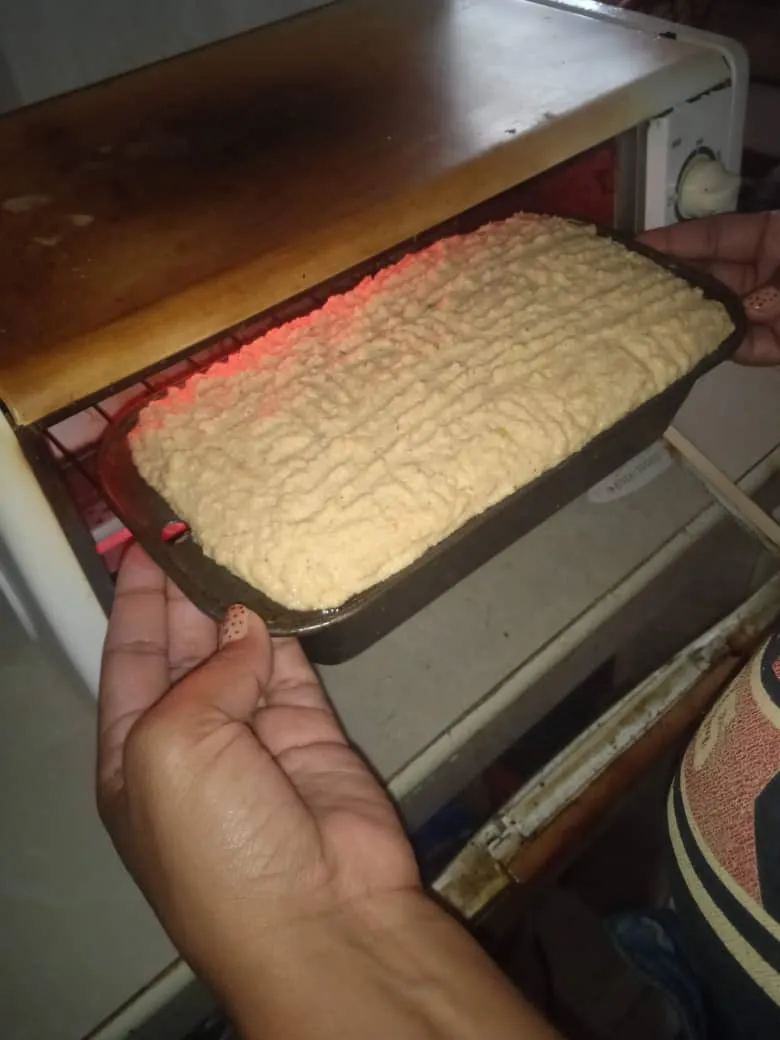 | 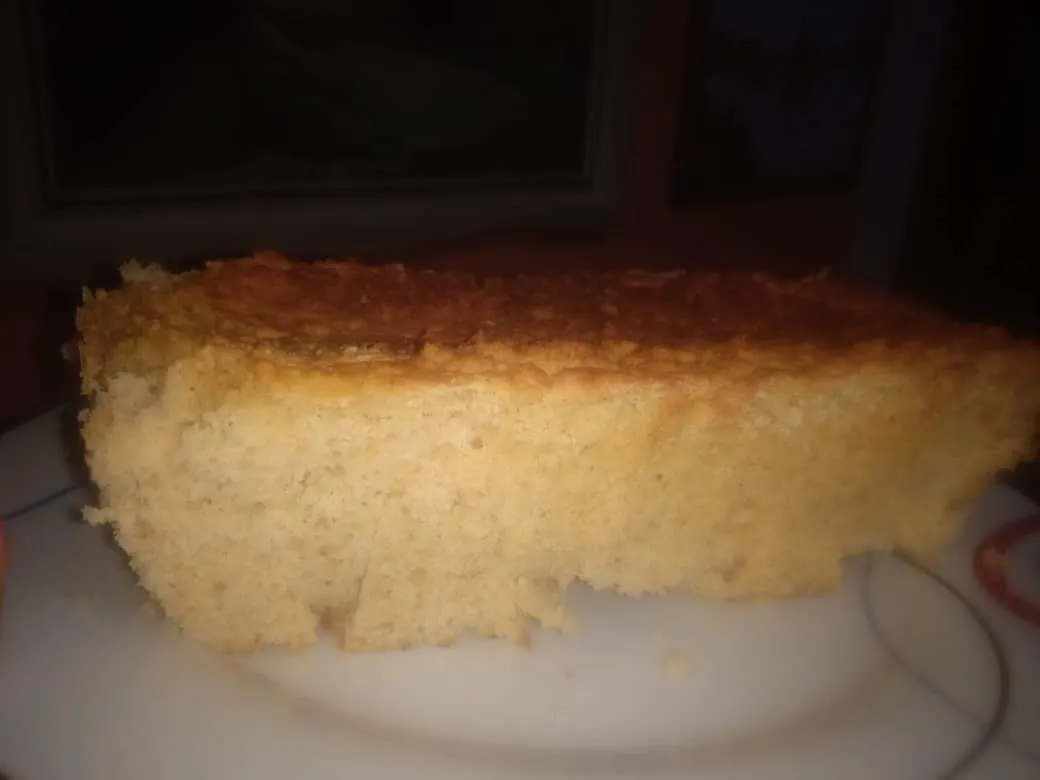 |
|---|
Se ha convertido en una buena alternativa para nuestra alimentación y forma parte de nuestra lista de opciones. Ideal para las personas cuya alimentación no se les permite gluten, además que si no tiene horno se puede hacer en sartén como especies de cachapas, igual se tiene que dejar levar la masa.
Espero les guste la receta, yo ya me imagino muchas cosas con esa mezcla, porque es muy versátil. Estaré atenta a sus comentarios...
It has become a good alternative for our diet and is part of our list of options. Ideal for people whose diet does not allow gluten, also if you do not have oven can be made in a pan as cachapas species, you still have to let the dough rise.
I hope you like the recipe, I already imagine many things with this mixture, because it is very versatile. I will be attentive to your comments...
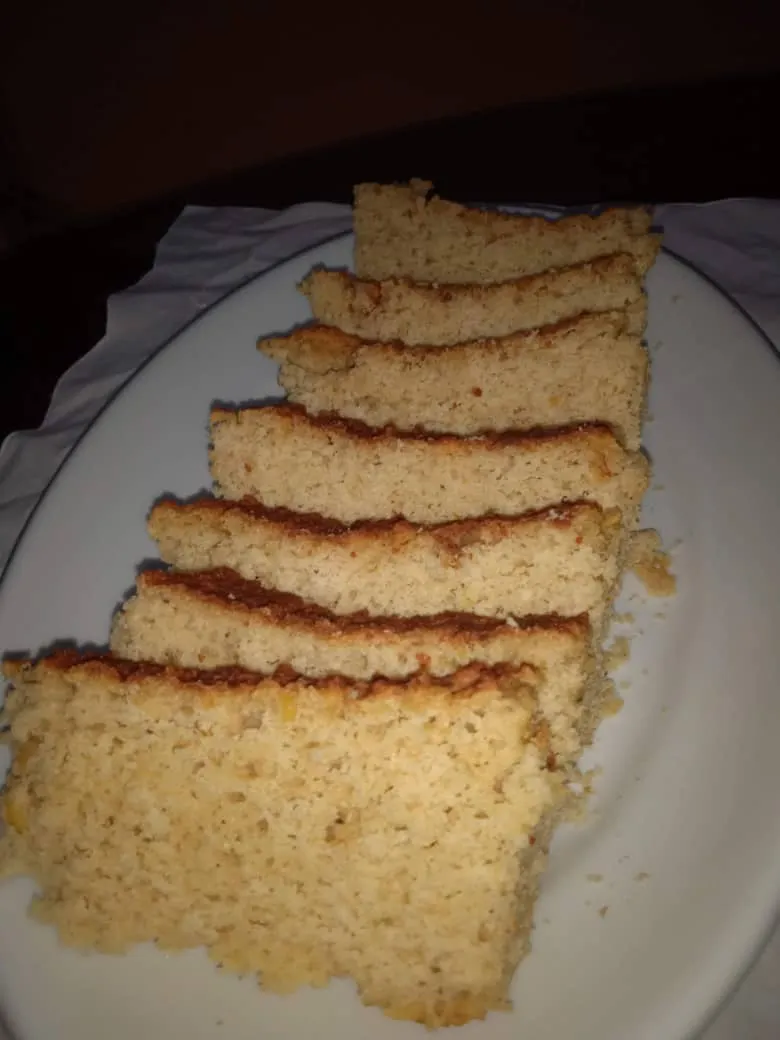

Fuente//Source||Fotos//Photos: Redmi 9A||Portada//Cover: CanvaApp||Divisor de texto//Text divider:CanvaApp||Traducción//Traslation: Deepl